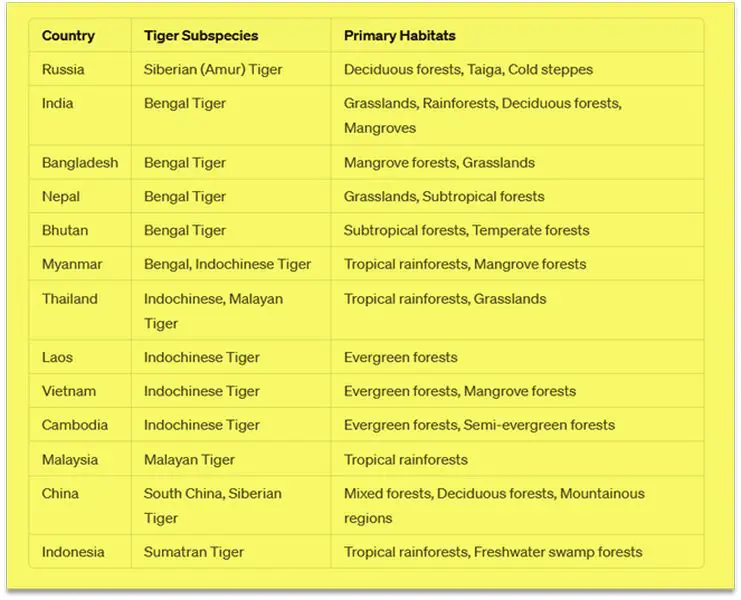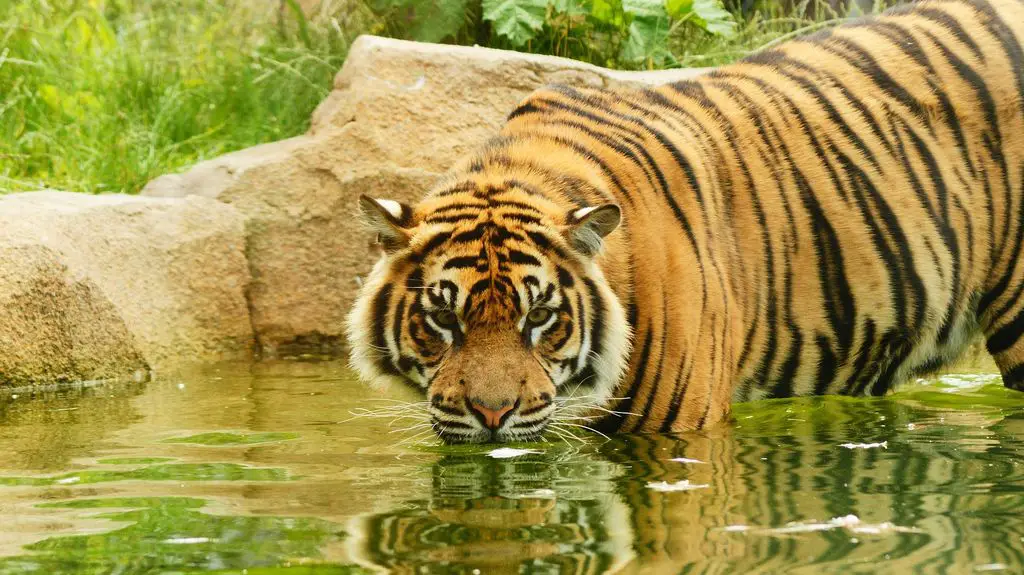Tigers are majestic and a symbol of power and agility. These creatures are vital to the ecosystem of their varied habitats. Where do tigers live? Knowing where tigers live is critical for animal lovers and conservation efforts.
Tigers: An Introduction
Tigers, also known as Panthera tigris, are a distinctive member of the cat family, Felidae. Their orange coat with black stripes is unique to each individual, much like human fingerprints. To better understand these remarkable animals, it’s essential to know that they are divided into six living subspecies: Bengal tiger, Indochinese tiger, Malayan tiger, Siberian tiger, South China tiger, and Sumatran tiger. Sadly, three subspecies – the Caspian tiger, the Bali tiger, and the Javan tiger – have already gone extinct. Let’s now explore the various habitats of tigers.
Where do Tigers Live? A Glimpse into Their Habitats

Tigers are highly adaptable creatures and can thrive in a variety of habitats. From the frozen expanses of Siberia to the dense mangrove swamps of the Sundarbans, from the grasslands of India to the tropical rainforests of Sumatra, tigers have made themselves at home in some of the most diverse environments on Earth.
A. Siberian Tiger: The Cold Steppes

The Siberian tiger, also known as the Amur tiger, is the largest of all the tiger subspecies. These tigers inhabit the Sikhote-Alin mountain region with a small population in southwest Primorye Province in the Russian Far East. The harsh, snowy landscape is far from the vision many people associate with tiger habitats. These tigers have adapted to this cold climate with a thick layer of fat and very dense fur. They also have paler and fewer dark stripes than other tiger subspecies.
B. Bengal Tiger: The Dense Jungles and Mangroves

Bengal tigers are primarily found in India, with smaller populations in Bangladesh, Nepal, and Bhutan. They prefer grasslands, subtropical and tropical rainforests, scrub forests, wet and dry deciduous forests, and mangroves. The Sundarbans, a UNESCO World Heritage Site, is a unique mangrove area home to a significant population of Bengal tigers.
C. Sumatran Tiger: Tropical Rainforests and Swamps

Sumatran tigers are the smallest of all existing tiger subspecies, found only on the Indonesian island of Sumatra. Their habitats include dense forests, freshwater swamp forests, and peat bogs. The tropical climate and dense vegetation offer an ideal environment for these tigers.

The Importance of Conserving Tigers’ Habitats
Tigers are currently listed as “Endangered” on the IUCN Red List of Threatened Species, with the South China tiger being “Critically Endangered” and possibly extinct in the wild. Sadly, the natural habitats of these majestic creatures have been shrinking due to human activities. Deforestation, poaching, and conflicts with humans threaten their existence.
Tigers are apex predators and play a critical role in maintaining the balance of the ecosystems they inhabit. Conserving tigers and their habitats is not just about saving an iconic species. It’s about preserving the health of ecosystems crucial for the survival of many other species, including humans.
Discussion and conclusions
Tigers are resilient and adaptable creatures, capable of surviving in some of the harshest and most diverse environments on Earth. Understanding where they live is essential to their conservation, as it sheds light on their needs and challenges.
In our journey exploring the diverse habitats of tigers, we have journeyed from the icy steppes of Siberia to the dense mangrove forests of the Sundarbans and the tropical rainforests of Sumatra. Each environment presents its unique challenges and plays a significant role in the survival and behavior of the respective tiger subspecies.
Conservation efforts such as anti-poaching laws, protected reserves, and awareness campaigns about the importance of tigers in the ecosystem are critical. The survival of tigers is a testament to nature’s resilience and adaptability, but it’s also a reflection of our attitude toward wildlife and natural spaces.




